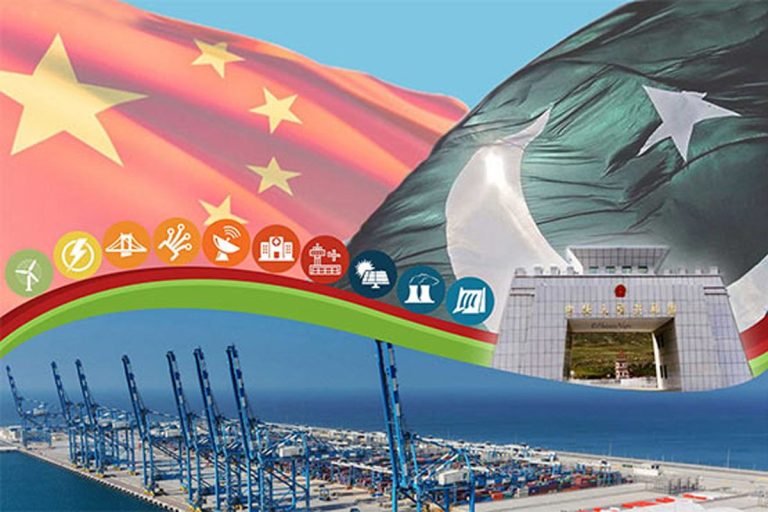Railway construction projects:
The most important project is the reconstruction of Main Line 1 between Karachi and Peshawar. Upgrades and additions to Main Lines 2 and 3 are also included. C-Pack will see a 4693-meter-high railway line extended to Khunjerab Pass. The first phase of the project included the acquisition of 250 new passenger carriages as well as the restoration of 21 railroad stops. The Pakistan Railway Carriage Factory near Islamabad will produce 180 coaches, with the government of Pakistan planning to purchase additional 800 coaches eventually, of which 595 will be made in Pakistan.
Train speeds will climb to 160 kilometers per hour as the railway line’s quality improves. Pakistan Railways’ annual revenue is estimated to rise by roughly 4 4480 million dollars. The percentage of freight transported by rail will rise from 4% to 20%. In the vicinity of Havelian, a dry port will be created. In addition, a computerized signal system will be installed throughout the whole length of the track, and fences will be placed along the track in metropolitan areas to prevent pedestrians and cars from crossing the tracks unnecessarily.
The 1254 km long Main Line 2 (ML-2) between Kotri in Sindh Province and Attock in North Punjab will also be upgraded as part of the C-Pac project. Gwadar will be connected to Jacobabad, which is located near Quetta on Main Line 3 and is at the confluence of ML-2 and ML-3 (ML-3). The C-Pack will also entail the development of the 560-kilometer Bostan railway line, which will provide connectivity to southern Afghanistan. It is expected to be completed by 2025.
Khunjerab Railway
Khunjerab Railway is a railway in Khunjerab, Afghanistan. The construction of the 682-kilometer Khunjerab railway line from Havelian city, the expansion of the Khunjerab Pass on the Chinese border, and the expansion of China’s Lincoln Railway in Kashgar, Xinjiang are among the long-term objectives. The railway would run almost parallel to the Karakoram Highway and will be completed by 2030. The Lahore Metro’s 1.6 billion Orange Line is now operational and is classified as a commercial project under C-Pack.
Energy sector projects:
Pakistan now has a capacity of 24,830 MW for energy generation. Projects to boost energy output has received around $33.3 billion in funding. Pakistan said in March 2018 that hydropower projects would be prioritized following the completion of the power plants already under construction. By 2030, Pakistan wants to generate 25% of its electricity from renewable energy sources.
The world’s largest solar power project, the 6,500-acre Quaid-e-Azam Solar Park near Bahawalpur, which is expected to generate 1,000 MW, will be completed by China’s Zonerji in December 2016. Xinjiang Sunoasis completed the first phase of the project, which has a generating capacity of 100 MW. Zonerji Company is responsible for the remaining 900 MW capacity under C-Pack.
The Turkish company Zorlu Energy Jhampir wind power project has already begun supplying 56.4 MW of electricity. Another wind farm, the Dawood Wind Power Project, is halfway finished and has a capacity of 50 MW. It cost $5115 million to build.
China’s Zonerji will finish the world’s largest solar power project, the 6,500-acre Quaid-e-Azam Solar Park near Bahawalpur, which is scheduled to generate 1,000 MW, in December 2016. The first phase of the project, which has a producing capacity of 100 MW, was completed by Xinjiang Synopsis. Under C-Pack, Zonerji Company is in charge of the remaining 900 MW capacity.
Coal Projects:
Despite some renewable energy projects, coal-fired facilities account for the majority of additional energy generation capacity under C-Pack. One of its soon-to-be-completed projects is a $5.58 billion coal power plant.
A coal-fired power station will be built in Hub in Balochistan province, generating 660 megawatts of electricity. In Gwadar, a 300 MW coal power plant is also being built.
With a capacity of 1320 MW, the Sahiwal Coal Power Project in Punjab has been completely operating since July 3, 2017.
The Jhampir wind power project, owned by the Turkish company Zorlu Energy, has already started supplying 56.4 MW of electricity. The Dawood Wind Power Project, which has a capacity of 50 MW, is another wind farm that is halfway completed. It was built at $5115 million.
As part of the Thar I project in Sindh, China’s Shanghai Electric Company would construct two 660-megawatt power plants at the Thar Coal Field.
As part of the Thar LL project, China Machinery Engineering Corporation will collaborate with Pakistan’s Engro Corporation to develop two 330 MW power units. As part of the first phase of the project, it will also establish a coal mine with a capacity of 3.8 million tons of coal per year. A cooperative venture will be formed.
More blogs to read







Join our affiliate community and maximize your profits—sign up now! https://shorturl.fm/L3OsQ
Promote our products—get paid for every sale you generate! https://shorturl.fm/P0kZR
Get rewarded for every recommendation—join our affiliate network! https://shorturl.fm/wCOTh
Partner with us and earn recurring commissions—join the affiliate program! https://shorturl.fm/dF7z4
Partner with us and enjoy high payouts—apply now! https://shorturl.fm/DK4ig
Promote our products and earn real money—apply today! https://shorturl.fm/7OIGC
Unlock exclusive affiliate perks—register now! https://shorturl.fm/rvFFS
Your audience, your profits—become an affiliate today! https://shorturl.fm/N6GMX
Monetize your traffic with our affiliate program—sign up now! https://shorturl.fm/9UAbs
Grow your income stream—apply to our affiliate program today! https://shorturl.fm/roWq8
Partner with us for generous payouts—sign up today! https://shorturl.fm/SDMQS
Partner with us for generous payouts—sign up today! https://shorturl.fm/SDMQS
https://shorturl.fm/DM36e
https://shorturl.fm/HVqHr
https://shorturl.fm/He8qL
https://shorturl.fm/Av3oR
https://shorturl.fm/GGMzf
https://shorturl.fm/wbXCe
https://shorturl.fm/TUc3D
https://shorturl.fm/d3SWQ
https://shorturl.fm/WNbXF
https://shorturl.fm/W08Dq
https://shorturl.fm/pQk5J
https://shorturl.fm/aTgIl
https://shorturl.fm/bezzQ
https://shorturl.fm/mPFDs
https://shorturl.fm/yGicU
https://shorturl.fm/E9Hvz
https://shorturl.fm/qPbX5
https://shorturl.fm/mLukk
https://shorturl.fm/6hzTi
https://shorturl.fm/3JZA2
https://shorturl.fm/x6VRT
https://shorturl.fm/cH6Mp
https://shorturl.fm/LaITQ
https://shorturl.fm/OVwkf
https://shorturl.fm/8awca
https://shorturl.fm/GNR6r